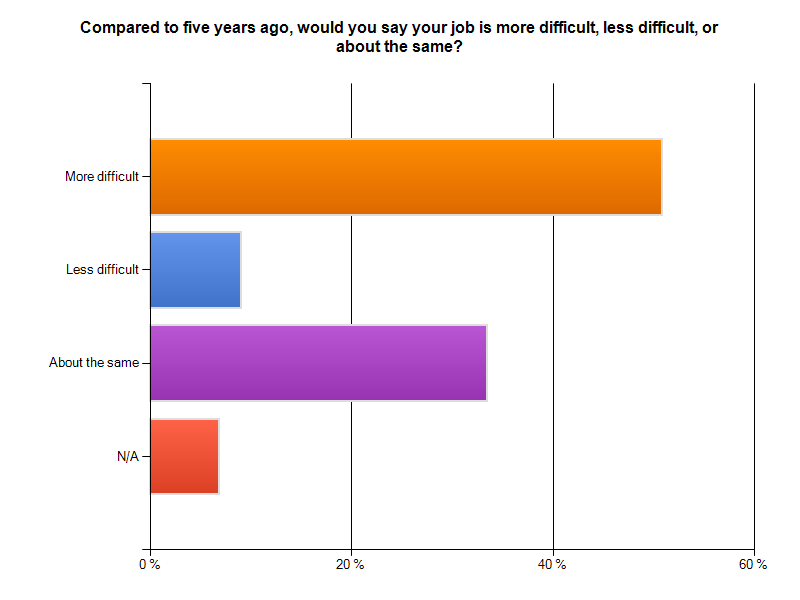If you find yourself working longer hours or maybe feeling a bit more stressed at the end of the day, you’re not alone. Fifty percent of college faculty who completed the annual Faculty Focus reader survey said that their job is more difficult than it was five years ago. Only nine percent said their job is less difficult, while 33 percent said it’s about the same.
Read more ›CURRENT ARTICLE • June 24
OTHER RECENT ARTICLES
The discussion board in Kathleen Lowney’s large blended (or hybrid) section of introduction to sociology at Valdosta State University wasn’t serving its intended purpose of engaging learners with the content and preparing them for face-to-face class sessions. She tried dividing the students into smaller discussion groups of 50 and then 20, and the results were the same: the weaker students waited until the last minute and essentially repeated what the better students had posted previously. When she replaced the public discussions with private journals, the quality of students’ posts improved, as did their grades.
Read More ›Introductory courses are packed with content. Teachers struggle to get through it during class; students struggle to master it outside of class. Too often learning consists of memorizing material that’s used on the exam but not retained long after. Faculty know they should use more strategies that engage students, but those approaches take time and, in most courses, that’s in very short supply.
Read More ›“How do you determine what can be flipped?”
Read More ›Editor’s Note: Part 1 of this article looked at the history of the flipped classroom. Today we look at what it takes for someone to teach effectively in a flipped classroom.
Read More › The flipped classroom seems to be the latest buzz in educational trends. Is this truly a new revolutionary approach or a revision of a technique used throughout the ages? To be clear, in simplest terms, flipping the classroom refers to swapping classroom lecture time for hands-on practice time. So the lecture is done for homework usually via a video or audio file and the classroom time is spent clarifying and applying new knowledge gained.
The flipped classroom seems to be the latest buzz in educational trends. Is this truly a new revolutionary approach or a revision of a technique used throughout the ages? To be clear, in simplest terms, flipping the classroom refers to swapping classroom lecture time for hands-on practice time. So the lecture is done for homework usually via a video or audio file and the classroom time is spent clarifying and applying new knowledge gained.
In an interview with Online Classroom, Veronica Diaz, associate director of the EDUCAUSE Learning Initiative, offered the following advice for creating a better blended course:
Read More ›Blended learning course design entails more than simply converting content for online delivery or finding ways to supplement an existing face-to-face course. Ideally, designing a blended course would begin with identifying learning outcomes and topics, creating assignments and activities, determining how interaction will occur, and selecting the technologies to best achieve those learning outcomes. However, a variety of constraints often affect the way blended courses are developed, which can compromise their quality.
Read More ›Blended learning course design, a deliberate combination of face-to-face and online learning, requires a shift in thinking in what it means to teach and what it means to learn. Done properly it provides a robust, pedagogically sound learning environment. Done poorly, without adequate forethought and planning, and you have a train wreck in the making.
Read More ›Blended learning is often described as the best of both worlds because it combines elements of face-to-face and online learning. For an instructor getting ready to teach his first blended course, the temptation may be to look at his traditional course syllabus, pick which classes can be moved online and then leave the rest of the syllabus as it has always been.
Read More ›





